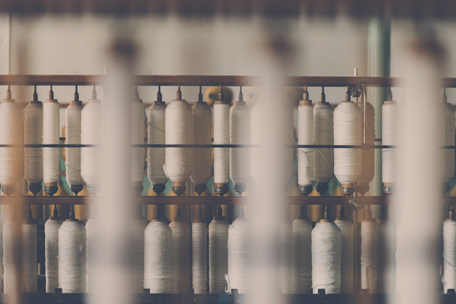Current Challenges Faced By The Indian Textile Industry
Being one of the oldest industries in India, the Indian Textile Industry contributes approximately 2% to the country’s GDP and 15% to total exports earning. Although the industry has been forecasted to reach USD 226 billion by 2023, the rise of emerging technologies in the Textile sector has been pushing the Indian Textile Industry towards a more challenging phase. Below are a few common challenges that the Indian Textile Industries must counter in order to uphold their position and move ahead in the market.
Evolving Demands
The Textile Industry is one of the few industries where adapting to the evolving needs of the customer is of paramount importance. It’s so important that upgrading the products, services and other offerings must be a part of the organizations’s Vision and Mission. Although India remains at the forefront in many technological inventions and adoptions, the rate of innovation in the textile industry must equate to the rate of change in the trends. The evolving demands call for a constant enhancement to the textile’s quality, process efficiency, product newness. To tackle this challenge, Innovation is the key.
Call for Sustainability
As much as the world hailed the inventions and discoveries in the Textile Industry sector, the increase in the pollutants released by the textile manufacturers in the recent past has been equally denounced. About 5% of all the landfill wastes are from textile industries and 20% of all the freshwater pollution is made by textile treatment and dyeing. The rise in the awareness of the importance of sustainability and pollution-less practices among the end consumers have pushed the textile manufacturers to comply with their demands. The call for sustainable and greener practices is the biggest way of the decade. Textile manufacturers must adapt to ride with this wave to avoid being engulfed by the wave.

Water and Energy Crises
Over the years, Textile Processing has been known to utilize a large amount of water than most of the chemical processing industries. About 36,000 litres of water is consumed by a unit that produces 20,000 Ib / day of fabric. Most of the monetary resources of a textile industry go into managing water resources and effluent treatment, a majority of which go to the gutters. As many experts have pointed out, the water crisis and in turn the energy crisis will only worsen in the coming years. In order to tackle this situation, Textile manufacturers must switch to more efficient products and practices.
Obsolete Technology
Textile Industries are as much dependent on machinery as they’re dependent on their human resources. Some of the machineries used in India are much older than the ones used in other countries. In fact, according to an estimate, 60% of spindles used in the Indian cotton textile mills are more than 25 years old. The same is the case across other textile industries as well. Upgrading to newer process lines and technologies will in turn help enhance the industries’ turnaround time and efficiency manifolds.

In order to help the textile manufacturers tackle the challenges in the Textile Industry, BR Specialities offers a range of innovative, efficient and sustainable solutions. We keep upgrading the product line and keep exploring the current challenges in the market to give our clients the best products and solutions that reap maximum benefits. To know more about our offerings, please Contact us












